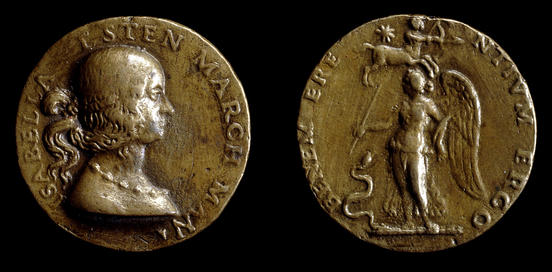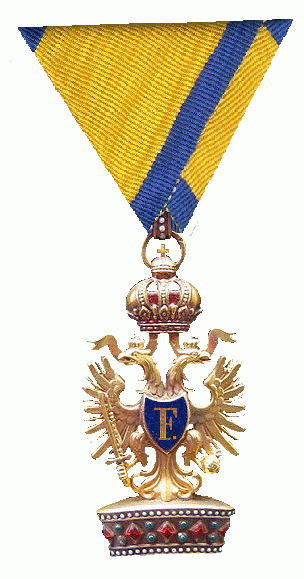|
Sadullah Güney
Sadullah Güney also known as Ali Sadullah Bey (Galata, 1883 – June 18, 1945) was an officer of the Ottoman Army and the Turkish Army. He was also the General Director of the Seyr-i Sefain (January 6, 1923 – July 1, 1933). Medals and decorations *Order of the Medjidie 4th and 3rd class *Order of Osmanieh 4th *Gallipoli Star (Ottoman Empire) *Silver Medal of Liyakat *Silver Medal of Imtiyaz *Prussia Iron Cross 2nd class *Austria-Hungary Military Merit Medal (Austria-Hungary) 3rd *Austria-Hungary Order of the Iron Crown (Austria) 3rd * Medal of Independence with Red Ribbon See also *List of high-ranking commanders of the Turkish War of Independence *Armistice of Mudros The Armistice of Mudros () ended hostilities in the Middle Eastern theatre between Ottoman Turkey and the Allies of World War I. It was signed on 30 October 1918 by the Ottoman Minister of Marine Affairs Rauf Bey and British Admiral Somerset ... External links *Ali BozoğluSadullah Güney ''Deni ... [...More Info...] [...Related Items...] OR: [Wikipedia] [Google] [Baidu] |
Artillery
Artillery consists of ranged weapons that launch Ammunition, munitions far beyond the range and power of infantry firearms. Early artillery development focused on the ability to breach defensive walls and fortifications during sieges, and led to heavy, fairly immobile siege engines. As technology improved, lighter, more mobile field artillery cannons were developed for battlefield use. This development continues today; modern self-propelled artillery vehicles are highly mobile weapons of great versatility generally providing the largest share of an army's total firepower. Originally, the word "artillery" referred to any group of soldiers primarily armed with some form of manufactured weapon or armour. Since the introduction of gunpowder and cannon, "artillery" has largely meant cannon, and in contemporary usage, usually refers to Shell (projectile), shell-firing Field gun, guns, howitzers, and Mortar (weapon), mortars (collectively called ''barrel artillery'', ''cannon artil ... [...More Info...] [...Related Items...] OR: [Wikipedia] [Google] [Baidu] |
Liakat Medal
The Liakat Medal () translated as "Medal of Merit," was a decoration of the Ottoman Empire established in 1890. It could be awarded in two classes, gold or silver. The medal was a common military decoration of the late Ottoman Empire, through the end of the First World War. The medal could also be awarded to civilians for general merit to society. In 1905, women were allowed to receive the medal for charitable work, and other civilian merit. The medal measured 25 mm in diameter came in both gold and silver classes. It was suspended from a red ribbon with narrow green side stripes. During World War I World War I or the First World War (28 July 1914 – 11 November 1918), also known as the Great War, was a World war, global conflict between two coalitions: the Allies of World War I, Allies (or Entente) and the Central Powers. Fighting to ... a clasp of two crossed swords was attached to the ribbon with the date AH 1333 (1915) inscribed upon them. References *ERMAN ... [...More Info...] [...Related Items...] OR: [Wikipedia] [Google] [Baidu] |
Ottoman Military Personnel Of The Italo-Turkish War
Ottoman may refer to: * Osman I, historically known in English as "Ottoman I", founder of the Ottoman Empire * Osman II, historically known in English as "Ottoman II" * Ottoman Empire 1299–1922 ** Ottoman dynasty, ruling family of the Ottoman Empire *** Osmanoğlu family, modern members of the family * Ottoman Caliphate 1517–1924 * Ottoman Turks, a Turkic ethnic group * Ottoman architecture * Ottoman bed, a type of storage bed * Ottoman (furniture), padded stool or footstool * Ottoman (textile), fabric with a pronounced ribbed or corded effect, often made of silk or a mixture See also * Ottoman Turkish (other) * Osman (other) * Usman (other) * Uthman (name) Uthman (), also spelled Othman, is a male Arabic name#Ism, Arabic given name with the literal meaning of a young bustard, Snake, serpent, or dragon. It is popular as a male given name among Muslims. It is also transliterated as Osman (name), Osma ..., the male Arabic given name from which the n ... [...More Info...] [...Related Items...] OR: [Wikipedia] [Google] [Baidu] |
People From Beyoğlu
The term "the people" refers to the public or common mass of people of a polity. As such it is a concept of human rights law, international law as well as constitutional law, particularly used for claims of popular sovereignty. In contrast, a people is any plurality of persons considered as a whole. Used in politics and law, the term "a people" refers to the collective or community of an ethnic group or nation. Concepts Legal Chapter One, Article One of the Charter of the United Nations states that "peoples" have the right to self-determination. Though the mere status as peoples and the right to self-determination, as for example in the case of Indigenous peoples (''peoples'', as in all groups of indigenous people, not merely all indigenous persons as in ''indigenous people''), does not automatically provide for independent sovereignty and therefore secession. Indeed, judge Ivor Jennings identified the inherent problems in the right of "peoples" to self-determination, as i ... [...More Info...] [...Related Items...] OR: [Wikipedia] [Google] [Baidu] |
1945 Deaths
1945 marked the end of World War II, the fall of Nazi Germany, and the Empire of Japan. It is also the year Nazi concentration camps, concentration camps were liberated and the only year in which atomic weapons Atomic bombings of Hiroshima and Nagasaki, have been used in combat. Events World War II will be abbreviated as “WWII” January * January 1 – WWII: ** Nazi Germany, Germany begins Operation Bodenplatte, an attempt by the ''Luftwaffe'' to cripple Allies of World War II, Allied air forces in the Low Countries. ** Chenogne massacre: German prisoners are allegedly killed by American forces near the village of Chenogne, Belgium. * January 6 – WWII: A German offensive recaptures Esztergom, Kingdom of Hungary (1920–1946), Hungary from the Soviets. * January 9 – WWII: American and Australian troops land at Lingayen Gulf on western coast of the largest Philippine island of Luzon, occupied by Japan since 1942. * January 12 – WWII: The Soviet Union begins the Vis ... [...More Info...] [...Related Items...] OR: [Wikipedia] [Google] [Baidu] |
1883 Births
Events January * January 4 – ''Life (magazine), Life'' magazine is founded in Los Angeles, California, United States. * January 10 – A Newhall House Hotel Fire, fire at the Newhall Hotel in Milwaukee, Wisconsin, United States, kills 73 people. * January 16 – The Pendleton Civil Service Reform Act, establishing the United States civil service, is passed. * January 19 – The first electric lighting system employing overhead wires begins service in Roselle, New Jersey, United States, installed by Thomas Edison. February * February 15 – Tokyo Electrical Lightning Grid, predecessor of Tokyo Electrical Power (TEPCO), one of the largest electrical grids in Asia and the world, is founded in Japan. * February 16 – The ''Ladies' Home Journal'' is published for the first time, in the United States. * February 23 – Alabama becomes the first U.S. state to enact an Competition law, antitrust law. * February 28 – The first vaudeville th ... [...More Info...] [...Related Items...] OR: [Wikipedia] [Google] [Baidu] |
List Of High-ranking Commanders Of The Turkish War Of Independence
This list includes high-ranking commanders who took part in the Turkish War of Independence: See also * Turkish State Cemetery#Burials * List of recipients of the Medal of Independence with Red-Green Ribbon (Turkey) Footnotes References * T.C. Genelkurmay Harp Tarihi Başkanlığı Yayınları, ''Türk İstiklâl Harbine Katılan Tümen ve Daha Üst Kademelerdeki Komutanların Biyografileri'', Genkurmay Başkanlığı Basımevi, Ankara, 1972. {{in lang, tr Turkish military personnel of the Turkish War of Independence Lists of Turkish military personnel, Commanders ... [...More Info...] [...Related Items...] OR: [Wikipedia] [Google] [Baidu] |
Medal Of Independence (Turkey)
A medal or medallion is a small portable artistic object, a thin disc, normally of metal, carrying a design, usually on both sides. They typically have a commemorative purpose of some kind, and many are presented as awards. They may be intended to be worn, suspended from clothing or jewellery in some way, although this has not always been the case. They may be struck like a coin by dies or die-cast in a mould. A medal may be awarded to a person or organisation as a form of recognition for sporting, military, scientific, cultural, academic, or various other achievements. Military awards and decorations are more precise terms for certain types of state decoration. Medals may also be created for sale to commemorate particular individuals or events, or as works of artistic expression in their own right. In the past, medals commissioned for an individual, typically with their portrait, were often used as a form of diplomatic or personal gift, with no sense of being an award ... [...More Info...] [...Related Items...] OR: [Wikipedia] [Google] [Baidu] |
Order Of The Iron Crown (Austria)
The Imperial Order of the Iron Crown (; ) was one of the highest orders of merit in the Austrian Empire and Austria-Hungary until 1918. It was founded in 1815 by Emperor Franz I of Austria as a re-establishment of the original Order of the Iron Crown, which previously had been an order of the Napoleonic Kingdom of Italy. The order had three classes and, until 1884, all classes conferred automatic hereditary ennoblement. The third class conferred the rank of ''Ritter'', the second class conferred the rank of ''Baron'', and the first class conferred the title of Privy Councillor, the style of Excellency and the right to attend court. According to the order's statutes, only a limited number of members throughout the empire were allowed at any given time. The maximum number of 1st class knights was 20, for the 2nd class it was 30 and for the 3rd class 50, limiting the total number of members to 100 at any given time. History The Holy Roman Empire, ruled by the Habsburg dynasty, ga ... [...More Info...] [...Related Items...] OR: [Wikipedia] [Google] [Baidu] |




